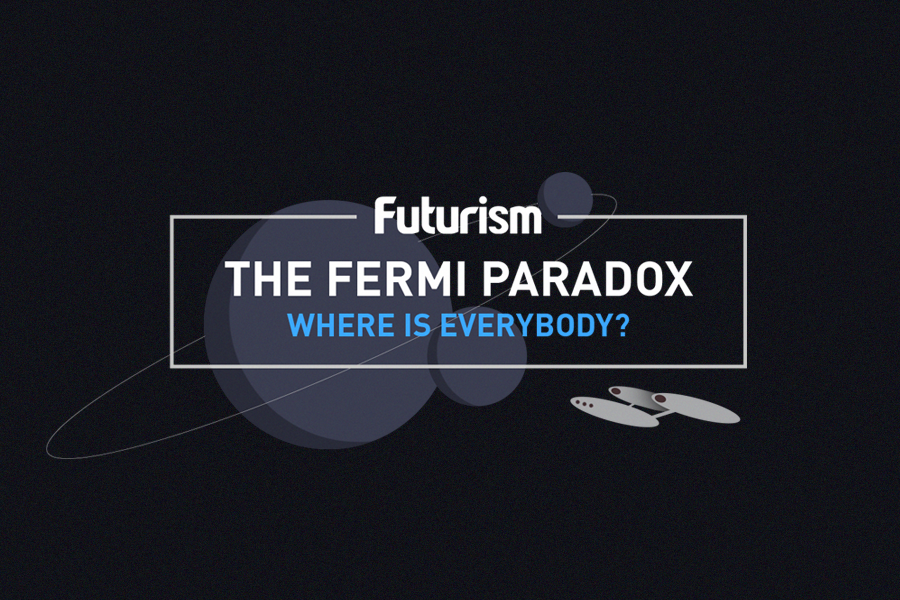
Oxford Scientists Suggest That Aliens Aren’t Extinct, Just Hibernating
by Tom Ward
Missing, or Sleeping?
[dropcap]D[/dropcap]uring a lunchtime conversation in 1950, Enrico Fermi, the “architect of the nuclear age” who built the world’s first nuclear reactor, posed a question that has resulted in decades of research and hundreds of published papers: “Where is everybody?”
This is the crystallization of the paradox he perceived (now known as the Fermi Paradox) which questions, “If the universe is large enough to have more than sufficient opportunity to create more life than what we see on earth, why haven’t we met that alien life yet?” Scientists, like Anders Sandberg, an Oxford neuroscientist, and Milan Ćirković, part of the Astronomical Observatory of Belgrade, have used this as a jumping-off point in their attempts to debunk — or defend — the possibility of extraterrestrial civilizations.
WATCH | The Fermi Paradox — Where Are All the Aliens? (1/2)
The universe is unbelievably big – trillions of stars and even more planets. Soo… there just has to be life out there, right? But where is it? Why don’t we see any aliens? Where are they? And more importantly, what does this tell us about our own fate in this gigantic and scary universe?
Videos, explaining things. Like evolution, time, space, global energy or our existence in this strange universe.
We are a team of designers, journalists and musicians who want to make science look beautiful. Because it is beautiful.

WATCH | The Fermi Paradox II — Solutions and Ideas – Where Are All the Aliens?
Where are all the aliens? The universe is too big and too old, why have we not met aliens yet? Do they live in computers? Were they wiped out by an ancient super intelligence? Or are we just to primitive to understand their motives? Whatever the answer is, it is incredibly important for our own future.
Sandberg and Ćirković teamed up with Stuart Armstrong, an AI expert at the Future of Humanity institute, to author a new paper arguing that alien life is hibernating. Their “aestivation hypothesis” rests on two premises: advanced societies have transitioned to machine-based life, and machines compute faster in cooler conditions. Therefore, they argue, aliens are hibernating until the universe cools so they can develop at a faster rate.
Sandberg and Ćirković explain on their blog that “as the Universe expands, this background temperature will decline exponentially” and “in principle, running processing becomes 10 times more efficient if your computer is 10 times colder (measured in Kelvins).” Because of this aliens are hibernating and waiting for the universe to cool.
They came up with the possible solution while discussing how to maximize the lifespan of a civilization. The theory developed as part of “eschatology considerations of what the best possible outcome for a civilization would be, not directly an urge to solve the Fermi question. However, it does seem to provide one new possible answer to the question.”
Other Possible Solutions
Solutions to the Fermi Paradox fall into three categories:

Click to view full infographic
First, that we are alone and there is no alien life. This could either be because aliens never developed or because they have now died off. Aditya Chopra, from the Australian National University, provided a causal explanation for extinction called the “The Gaian Bottleneck.” He believes that while other life has developed, it was too fragile, and humanity is the only species that has proven persistent enough to survive through The Great Filter (the challenges life faces as it develops, codified by Robin Hanson).
Second, that aliens exist but not here, due to limitations in our methods of communication, our technology, or our comprehension. Michio Kaku details this answer in an interview with The Daily Grail using the analogy of an ant and a highway:
Let’s say we have an anthill in the middle of the forest. And right next to the anthill, they’re building a ten-lane super-highway. And the question is “Would the ants be able to understand what a ten-lane super-highway is?
Third, that there are aliens here, but they are not interacting in an obvious manner. Rather than blaming us primitive humans, this solution suggests the extraterrestrials themselves are being ambiguous. This category holds the hibernation hypothesis and could also be the explanation behind the baffling light fluctuations of the star KIC 8462852, which some have argued could be due to alien interference.
Whatever the explanation — if there even is one — it is a fascinating question to try to answer. But perhaps the next question, and one also worth thinking about, is “what happens when we do meet aliens?”
This article was originally published by Futurism. Read the original article.